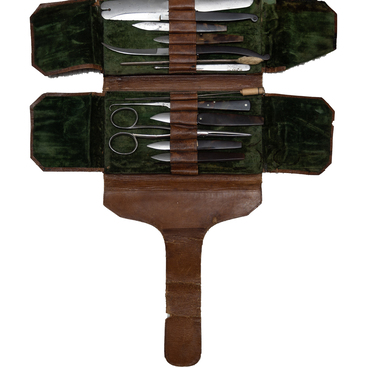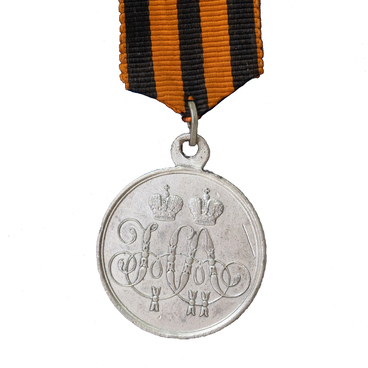The commemorative medal “Paris Treaty” was made in Great Britain in honor of the peace treaty, which was signed by the representatives of Russia, France, Great Britain, Austria, Turkey and Sardinia in 1856.
On the obverse of the medal there is a stone — an altar. Above it is a dove holding an olive branch in its beak. The image has a special meaning: the altar means benefit for the society, the image of a dove is associated with the Holy Spirit, and the olive branch is a symbol of peace and wisdom.
At the base of the altar, the author of the sketch placed a rod — the emblem of international trade. Two snakes are coiled around it, and the top of the picture is crowned with wings. On the right and on the left is a cornucopia, a symbol of earthly fertility. Under this composition are the inscriptions: “Peace”, “Abundance”, “London” and “Peaceful trade and friendship with all nations.”
The reverse side of the medal —the reverse — is decorated with a wreath of laurel branches. They show elements of the coats of arms that belonged to the allied powers: Great Britain, France, Turkey, Sardinia.
They all fought against Russia.
The Paris Congress was a multilateral international negotiating forum. On February 13, 1856 it was organized in Paris in order to bring the Crimean War to an end and come to a peace agreement.
The congress was attended by authorized representatives of Russia and the Allied countries: the Count Alexey Orlov and diplomat Philip Brunnov, the 4th Earl Clarendon George Villiers and the 1st Baron Cowley Henry Wellesley, the diplomat Karl Buol, the statesman Camillo di Cavour and many others. It was chaired by the French Foreign Minister, the son of Napoleon I, the Count Alexander Walewski.
As a result, the representatives signed a peace treaty —the Paris Treaty. The Russian side managed to preserve the fortifications and shipyards in Nikolaev and Kherson and preserve navigation and the construction of fortifications on the Sea of Azov.
Under the treaty, Russia returned the city of Kars to Turkey in exchange for the seized by the allies Sevastopol, Balaklava and other cities in the Crimea, ceded the mouth of the Danube and part of southern Bessarabia to the Moldavian principality. The Black Sea was proclaimed neutral: Russia and Turkey were forbidden to build military fleets on it, and military fortresses and arsenals on the coast. The Black Sea straits were closed to warships of all countries.
On the obverse of the medal there is a stone — an altar. Above it is a dove holding an olive branch in its beak. The image has a special meaning: the altar means benefit for the society, the image of a dove is associated with the Holy Spirit, and the olive branch is a symbol of peace and wisdom.
At the base of the altar, the author of the sketch placed a rod — the emblem of international trade. Two snakes are coiled around it, and the top of the picture is crowned with wings. On the right and on the left is a cornucopia, a symbol of earthly fertility. Under this composition are the inscriptions: “Peace”, “Abundance”, “London” and “Peaceful trade and friendship with all nations.”
The reverse side of the medal —the reverse — is decorated with a wreath of laurel branches. They show elements of the coats of arms that belonged to the allied powers: Great Britain, France, Turkey, Sardinia.
They all fought against Russia.
The Paris Congress was a multilateral international negotiating forum. On February 13, 1856 it was organized in Paris in order to bring the Crimean War to an end and come to a peace agreement.
The congress was attended by authorized representatives of Russia and the Allied countries: the Count Alexey Orlov and diplomat Philip Brunnov, the 4th Earl Clarendon George Villiers and the 1st Baron Cowley Henry Wellesley, the diplomat Karl Buol, the statesman Camillo di Cavour and many others. It was chaired by the French Foreign Minister, the son of Napoleon I, the Count Alexander Walewski.
As a result, the representatives signed a peace treaty —the Paris Treaty. The Russian side managed to preserve the fortifications and shipyards in Nikolaev and Kherson and preserve navigation and the construction of fortifications on the Sea of Azov.
Under the treaty, Russia returned the city of Kars to Turkey in exchange for the seized by the allies Sevastopol, Balaklava and other cities in the Crimea, ceded the mouth of the Danube and part of southern Bessarabia to the Moldavian principality. The Black Sea was proclaimed neutral: Russia and Turkey were forbidden to build military fleets on it, and military fortresses and arsenals on the coast. The Black Sea straits were closed to warships of all countries.



